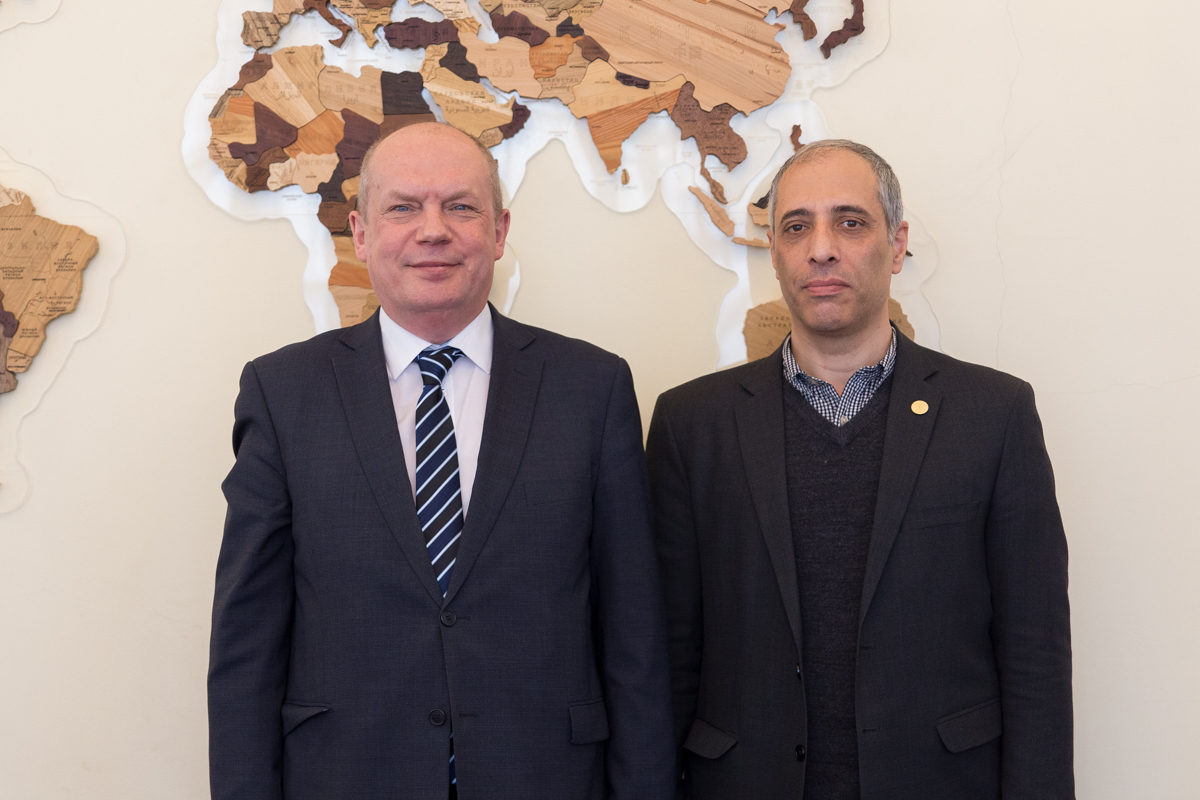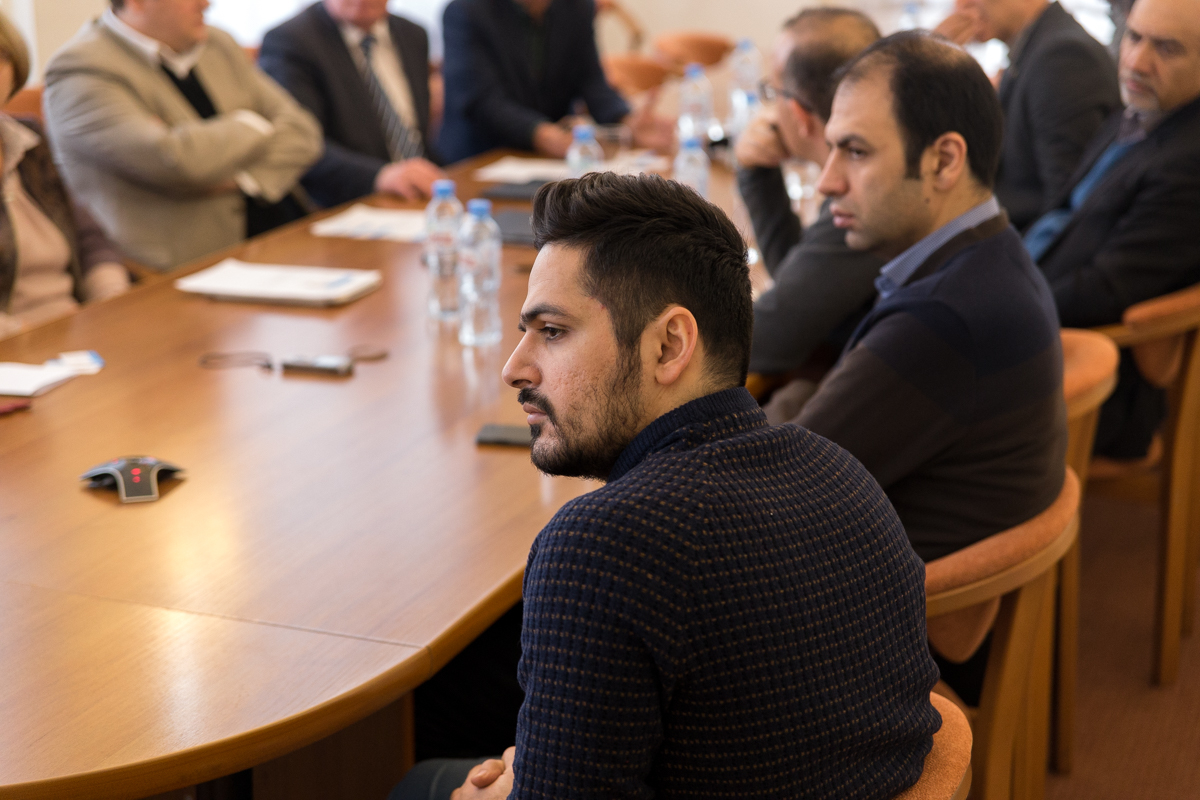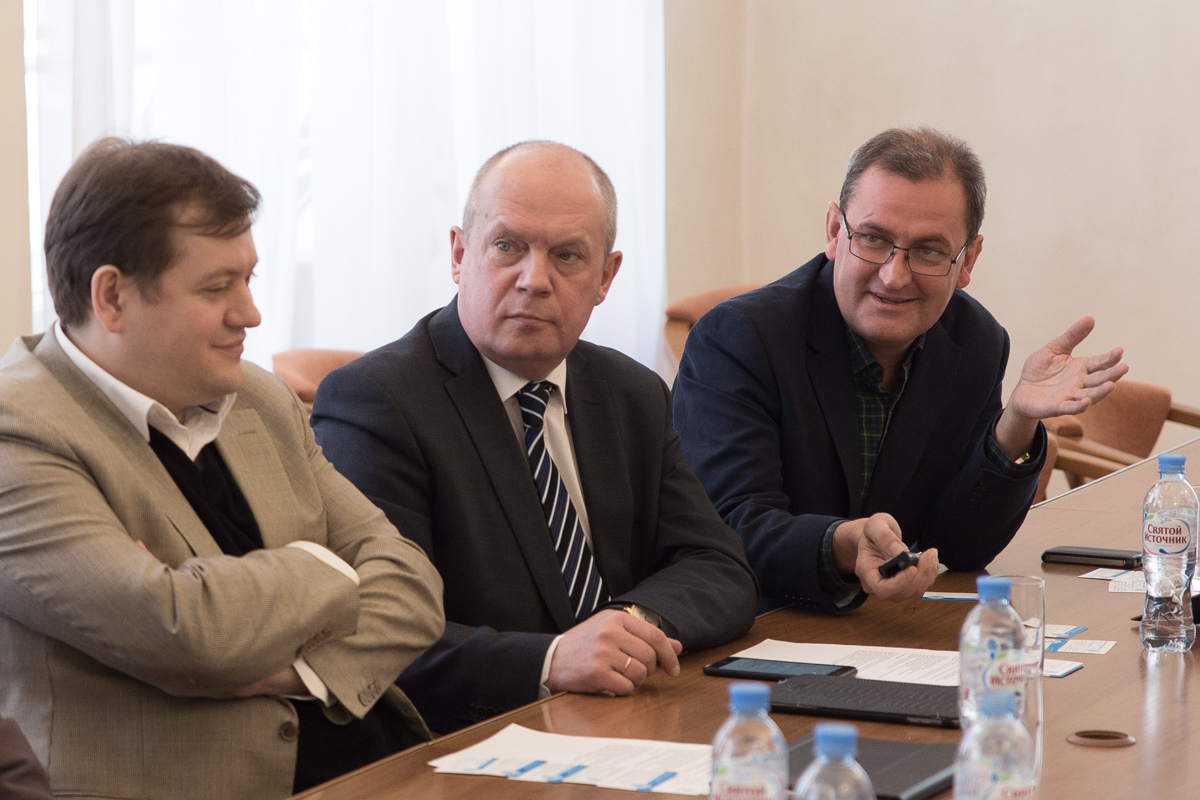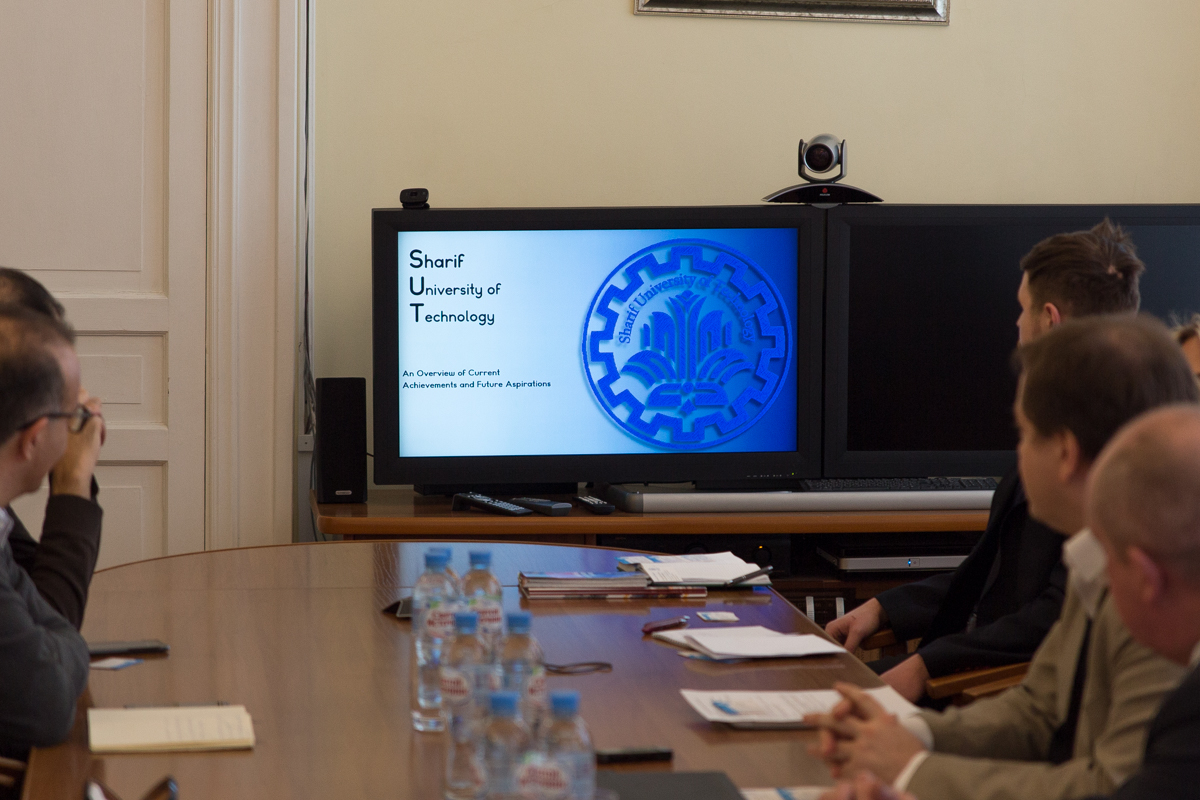Collaboration with SPbU: Iranian scientists
St Petersburg University has signed an agreement on collaboration with Sharif University of Technology.
The delegation from the Iran’s leading university in engineering was welcomed by the SPbU Vice-Rector for Research Sergei Aplonov. It was St Petersburg University that introduced the Persian language in Russia in 1819. Today, St Petersburg University is actively engaged in collaboration with Iran’s universities in a wide range of research areas.
Today the University has much to offer. Primarily, I mean the Research Park that has no equals.
SPbU Vice-Rector for Research Sergei Aplonov
Sharif University of Technology is the third university, after the University of Tehran and Art University of Isfahan, in Iran that SPbU has signed an agreement with. Colaboration with SPbU is of great interest to Tarbiat Modares University that is an exclusively graduate university.
Our Iranian colleagues met the directors of the Research Park: Director of the Centre for Magnetic Resonance Methods in Research Prof Petr Tolstoi, Director of the Centre for Thermogravimetric and Calorimetric Methods in Research Prof irina Zvereva, and chief research associate of the Theodosius Dobzhansky Center for Genome Bioinformatics Vladimir Brukhin.
The head of the delegation of Sharif University of Technology (SUT), Vice-President for Research and Technologies Mohammad Reza Movahedi expressed his gratitude for an opportunity for collaboration and shared his views on how our collaboration can benefit both universities. “In Iran, SUT is among the leaders in education in engineering: we have nine engineering faculties and 15 resource centres”, — he said.
In 2017, the QS World Universities Rankings featured SUT among 431–440, which propelled it as a leading university in Iran. The university is interested in encouraging talented students. Like in SPbU, its students can launch their own start-up projects, the best of which are financially supported by the university. SUT offers the Technological Complex that focuses on consulting services and attestation, research and development projects for the public and private sectors in Iran: some mobile operators, Teheran subway, oil and gas companies.
From 2011 to 2014, the scientists from SPbU and SUT prepared 8 joint publications in materials science, physics, astronomy, engineering, and medicine.
Petr Tolstoi told the guests about the Research Park at SPbU. The Research Park operates in four areas: nanotechnology and materials science, biomedicine, information systems, and ecology and rational nature management. The scientists outside the University can also use the facilities the Research Park offers. Among its international projects is Actris-2/EARLINET and NASA that monitor the atmosphere, and private companies: Unilever, British American Tobacco, Siemens, Dell EMC, and Bosch. Today, the Research Park is implementing a number of projects in education and research with over 130 organisations.
Prof Irina Zvereva presented the Resource Centre for Thermogravimetric and Calorimetric Methods in Research. The Centre focuses on a wide range of research areas in calorimetry (science or act of measuring changes in chemical reactions, physical changes, or phase transitions), thermal analysis, and study of physical and chemical properties of the substances and materials.
The chief research associate Valdimir Brukhin told about Theodosius Dobzhansky Center for Genome Bioinformatics. The Centre focuses on genetics and bioinformatics, develops and introduces innovation computational methods for genome assembly, genome analysis and discovery of the new genes. The Centre serves as a coordinator for the research consortium that carries out the Genome Russia project that is a database containing anonymous information of the genomes in Russia. The research findings are expected to serve as a base for medicine of the future.
Sergei Aplonov and Mohammad Reza Movahedi signed a framework agreement on collaboration between SPbU and SUT to initiate joint research projects and events. The delegation also visited the Resource Centres at the Research Park.





